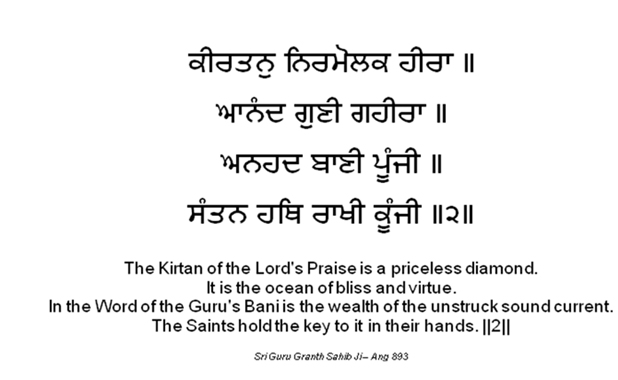Gurmat Sangeet Sammelan at SW Gurudwara, August 19-21
HOUSTON: The Gurudwara Sahib of Southwest Houston (Sugar Land) is proud to host Dr. Gurnam Singh and Bhai Nirmal Singh along with Resident Raagi, Bhai Bhupinder Singh Paras for three days during the Gurmat Sangeet Sammelan 2016, on August 19, 20, and 21. They will perform traditional kirtan according to the parampara set by the Sikh Gurus.
Gurmat Sangeet or Shabad Kirtan is the singing of hymns or shabads from the Guru Granth Sahib, the central text of Sikhism. Traditionally the Shabads are sung in the Raagas as prescribed in the Guru Granth Sahib.
The Kirtan of the Lord’s praise is a priceless diamond.
It is the ocean of bliss and virtue.
In the Word of Guru’s Bani is the wealth of the unstruck sound current.
The Saints hold the key to it in their hands II2II.
Sri Guru Granth Sahib – Ang 893
Shabad Kirtan began in the 16th century as the musical expression of mystical poetry conceived by the founder of Sikhism, Guru Nanak. He initiated the tradition of communicating the spiritual message through his utterances, acting as humanity’s channel to the divine:
“As the Word of God descends upon me so do I make it known to people, O Lalo.”
(Guru Granth Sahib,page:722)”.
Following Guru Nanak, all the Sikh gurus sang in the ten prevalent classical and folk music styles, accompanied by stringed and percussion instruments. The style was where the text was of prime significance and music played a supporting, albeit important, role. The gurus specified the Raaga in which they sang each hymn in the sacred Sikh scripture, the Guru Granth Sahib. Thirty one main raagas and same number of variants were named and several are unique to the Sikh music tradition.
Hindustani music underwent significant changes in the setting of Mughal courts, and a separate variety of melodic forms and a well-developed percussion system. In the 20th century, the devotional Gurmat Sangeet sung in Dhrupad style was overtaken by Darbari Khayal style. The harmonium took the place of stringed instruments, and the tabla replaced the pakhavaj and Jori. The absence of a written tradition and the lack of consistent framework for the documentation and preservation of Gurmat Sangeet has had a devastating effect, as the centuries-old system for the transmission of the tradition has broken down under the pressures of the modern world.
Bhai Mardana (1459-1534), a Rabab player and the follower and longtime companion of Guru Nanak Dev was the first Sikh musician. Sikh musicians were later developed into three types: Rabais, Raagis and Dhadhis. Thirty One Raagas mentioned in the Guru Granth Sahib are: Soohi, Bilawal, Gaund, Sri, Maajh, Gauri, Aasa, Gujri, Devgandhari, Bihagra, Sorath, Dhanasri, Jaitsri, Todi, Bhairagi, Tilang, Raamkali, Nat Narayan, Maali Gaura, Maaru, Tukhari, Kedara, Bharav, Basant, Sarang Malhaar, Jaijawanti, Kalyaan, Vadhans, Prabhati and Kanara. These Raagas have a direct relationship to human moods and feelings at different times of the day seasons.
Fortunately, there still exist today Kirtaniyas (Raagis) who have invested significant effort and energy into the practice, preservation and teaching of traditional. Among the noted Raagis/teachers are Dr. Gurnam Singh and Padamshri Bhai Nirmal Singh Gurmat Sangeet Khalsa. Dr. Gurnam Singh is Chairman of the Gurmat Sangeet Department, Punjabi University at Patiala, Punjab. He has authored several books on Gurmat Sangeet and currently several masters and doctoral students are studying under him. He is a practicing Raagi of utmost caliber. Bhai Nirmal Singh Khalsa has captivated Sikh sangats all over the world and is Hazoori raagi of Sri Harimandar Sahib (The Golden Temple), Amritsar.

